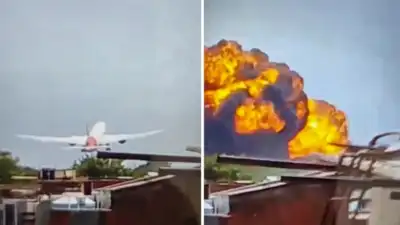On June 12, 2025, Air India flight AI171, a Boeing 787-8 Dreamliner en route from Ahmedabad to London, crashed just moments after takeoff. The tragic incident claimed the lives of all 241 people on board, with more than 28 casualties reported on the ground. This has become one of the deadliest aviation disasters in Indian aviation history.
DGCA Orders Comprehensive Safety Inspection
In the wake of this catastrophic accident, the Directorate General of Civil Aviation (DGCA), India’s aviation regulatory body, has ordered a comprehensive safety inspection of all Air India Boeing 787-8 and 787-9 Dreamliner aircraft. The primary aim is to review the technical integrity and safety compliance of these aircraft. Special attention will be given to planes equipped with General Electric’s GEnx engines, the same type used on the ill-fated AI171.
Details of the Crash
Flight AI171, registered as VT-ANB, was scheduled to fly from Ahmedabad to London. Approximately 30 seconds after takeoff, the aircraft collided with the hostel block of B.J. Medical College. The crash killed all 241 occupants, including 230 passengers and 11 crew members. Additionally, over 28 people lost their lives on the ground. This tragedy marks the first total loss and the most severe accident involving a Boeing 787 Dreamliner.
Investigation and Global Response
Recognizing the severity of the crash, the Indian government has assembled a high-level investigation team. The probe includes participation from India’s Aircraft Accident Investigation Bureau (AAIB), the UK’s Air Accidents Investigation Branch (AAIB), and the US-based National Transportation Safety Board (NTSB). Both flight data recorders (black boxes) and a digital video recorder (DVR) have been recovered and are expected to provide critical insights into the cause of the accident.
DGCA’s Previous Actions on Air India
This is not the first time DGCA has raised concerns about Air India’s safety practices. In 2023, a DGCA audit revealed significant irregularities in the airline’s internal safety reports, with 13 falsified cases identified. As a result, Air India’s Head of Flight Safety was suspended for one month.
The Way Forward
Following DGCA’s latest directive, Air India must conduct detailed technical checks on its entire fleet of Dreamliners. The inspections will cover engine health, flap and slat configurations, as well as noise and vibration monitoring during flight. Additionally, the airline is expected to enhance its training and internal safety oversight mechanisms to reinforce aviation safety culture.
Conclusion
The crash of AI171 has sent shockwaves through the Indian aviation sector. The DGCA’s order for a full-scale safety inspection is a much-needed step toward restoring public confidence and preventing future tragedies. However, it is equally critical for Air India to reevaluate and strengthen its internal systems and safety protocols to ensure passenger safety remains the top priority.







